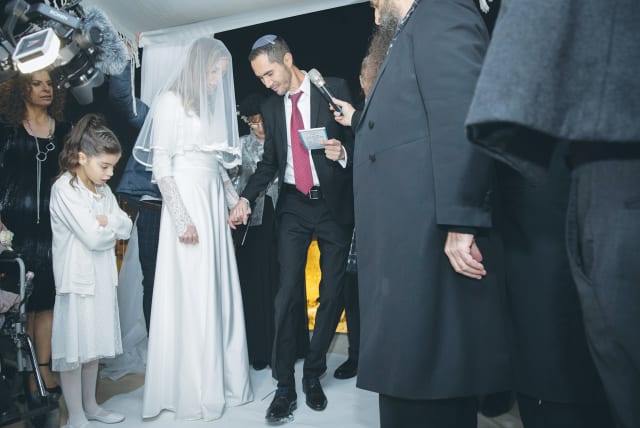The role of ethnicity in Israel after 75 years - opinion

Only about 5% of Israelis rate ethnic cleavage as the main source of tension in Israel - stronger by far are tensions between Arabs and Jews or Right and Left.
Immigration brought to Israel people who had one crucial characteristic in common: Jewish religious affiliation. Nevertheless, they arrived from very different political, social and cultural backgrounds in Europe, which in the mid-twentieth century had already attained an advanced level of modernization, and in the Middle East, which largely continued to follow traditional patterns. This social distance created tension between Ashkenazi and Mizrahi Jews in the early statehood years, which only intensified in view of both objective and subjective feelings of deprivation among Mizrahim in their places of settlement, work, education and more.
The narrowing of ethnic gaps
Over time, however, we have witnessed a narrowing of these ethnic gaps and a greater intermingling of Ashkenazim and Mizrahim, perhaps most significantly in ethnic intermarriage. Thus, the share of those who marry someone of the opposite ethnicity has climbed from only 13% of marriages in Israel’s first decade to about one-fifth in the late 1970s and early 1980s and slightly more than a quarter in the most recent marriage cohorts. Importantly, given that Israeli Jews are more-or-less evenly divided between Ashkenazim and Mizrahim, a random choice of spouse, not taking ethnic origin into account, should have resulted in a 50% intermarriage rate. Thus, much of this potential has already been realized.
There are two factors that somewhat hinder the continued growth of interethnic marriage. The first is the large influx of immigrants from the former Soviet Union, among whom anyone who had already been married arrived with a partner of the same ethnicity. A second factor is an increase in the weight of the Ultra-Orthodox, among whom marriage with someone from another ethnic group is not customary.
Another family characteristic that has converged with even greater vigor – absolute convergence, in fact is fertility. Shortly after the mass immigration in the early statehood years, a woman of Mizrahi descent had six children on average as against three for an Ashkenazi woman. The differential narrowed gradually and has disappeared today, leaving the number of children per woman in the two groups exactly the same, three.
If the large families of Mizrahi women once made it difficult for them to go out and work, induced greater residential density and left them with less disposable income for their children’s enrichment, today these barriers have fallen, thereby providing new and more equal opportunities for educational and economic mobility among Mizrahi women and narrowing the ethnic gap.
INDEED, THE educational attainments of Mizrahi Israelis have been improving over time. As evidenced by data from different sources, including the Central Bureau of Statistics, Adva Center and the National Insurance Institute, the share of Mizrahim with college degrees (bachelor’s or higher) has increased from about 10% among the first generation to just over a third among the third generation. The respective intergenerational growth among Ashkenazi Israelis was from about 40% to around 54%, meaning that the ethnic gap persists but has narrowed.
Success can't blur memories of past discrimination
These changes have also been channeled to a reduction of income disparities by about one-half.
This educational and economic mobility should be credited to the relocation of large numbers of people of Mizrahi background from disadvantaged towns and peripheral communities to more central parts of the country, the expansion of compulsory education from ten years to twelve beginning in 2007, and the establishment of public and private colleges since the late 1980s, creating broader opportunities for academic studies countrywide.
The trends in these objective indicators are complemented by subjective perspectives. Israelis’ assessment of their country’s society, documented by the Israel Democracy Institute, suggests that consistently, in each of the past ten years, only 5% or less have rated ethnic cleavage as the main source of tension in Israel.
Stronger by far are tensions between Arabs and Jews, Right and Left, secular and religious, and rich and poor. Still, upward mobility and success cannot blur memories in all cases, especially given the short generational distance involved. Thus, many Israelis of Mizrachi extraction carry anger at past discrimination and deprivation.
This is the third in a series of eight op-ed articles that are appearing once a month during Israel’s 75th anniversary year.
The writer is a professor and head of the Division of Jewish Demography at the Institute of Contemporary Jewry at The Hebrew University of Jerusalem, where he also holds the Shlomo Argov Chair in Israel–Diaspora Relations.
Jerusalem Post Store
`; document.getElementById("linkPremium").innerHTML = cont; var divWithLink = document.getElementById("premium-link"); if (divWithLink !== null && divWithLink !== 'undefined') { divWithLink.style.border = "solid 1px #cb0f3e"; divWithLink.style.textAlign = "center"; divWithLink.style.marginBottom = "15px"; divWithLink.style.marginTop = "15px"; divWithLink.style.width = "100%"; divWithLink.style.backgroundColor = "#122952"; divWithLink.style.color = "#ffffff"; divWithLink.style.lineHeight = "1.5"; } } (function (v, i) { });

